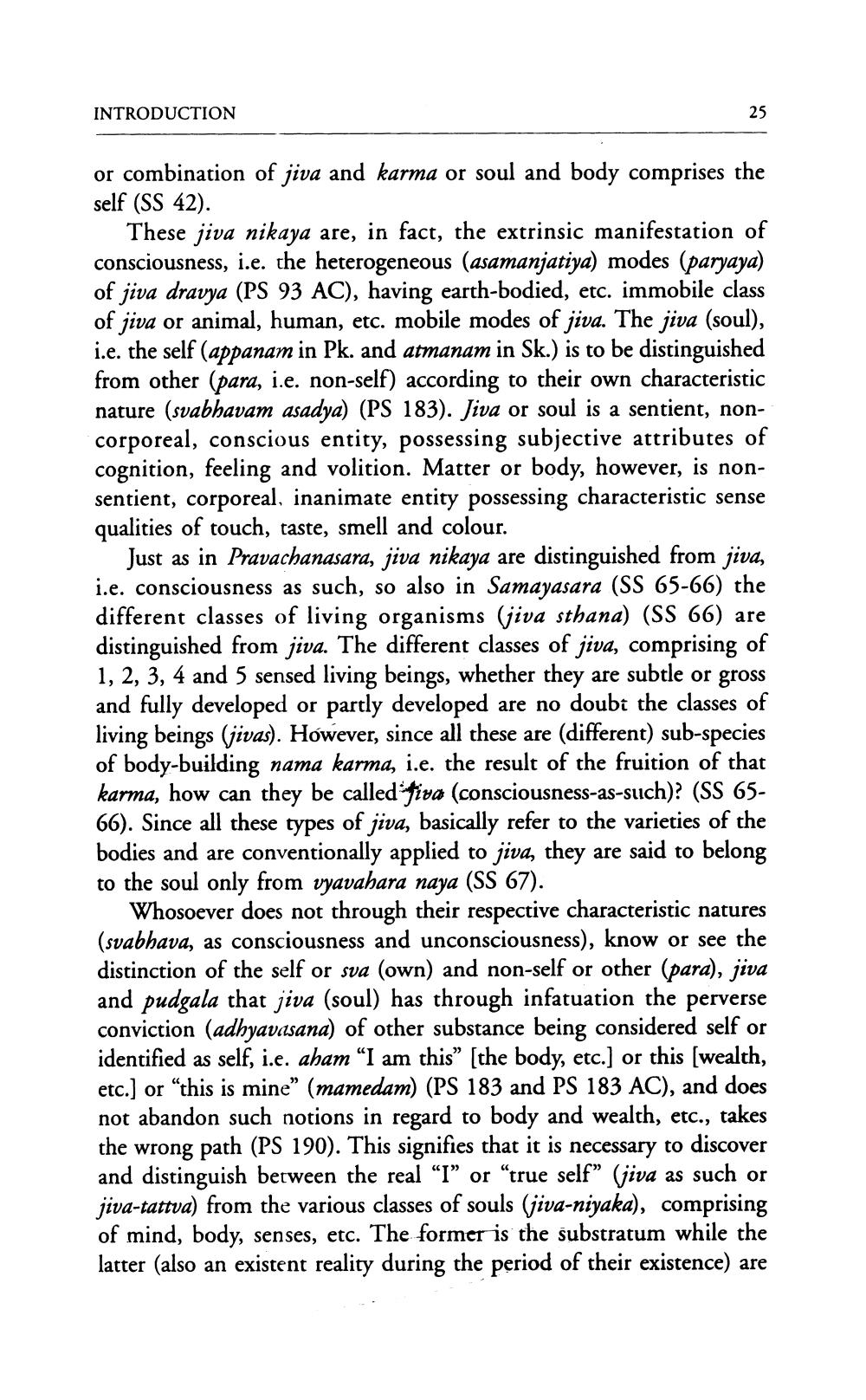________________
INTRODUCTION
or combination of jiva and karma or soul and body comprises the self (SS 42).
These jiva nikaya are, in fact, the extrinsic manifestation of consciousness, i.e. the heterogeneous (asamanjatiya) modes (paryaya) of jiva dravya (PS 93 AC), having earth-bodied, etc. immobile class of jiva or animal, human, etc. mobile modes of jiva. The jiva (soul), i.e. the self (appanam in Pk. and atmanam in Sk.) is to be distinguished from other (para, i.e. non-self) according to their own characteristic nature (svabhavam asadya) (PS 183). Jiva or soul is a sentient, noncorporeal, conscious entity, possessing subjective attributes of cognition, feeling and volition. Matter or body, however, is nonsentient, corporeal, inanimate entity possessing characteristic sense qualities of touch, taste, smell and colour.
Just as in Pravachanasara, jiva nikaya are distinguished from jiva, i.e. consciousness as such, so also in Samayasara (SS 65-66) the different classes of living organisms (jiva sthana) (SS 66) are distinguished from jiva. The different classes of jiva, comprising of 1, 2, 3, 4 and 5 sensed living beings, whether they are subtle or gross and fully developed or partly developed are no doubt the classes of living beings (jivas). However, since all these are different) sub-species of body-building nama karma, i.e. the result of the fruition of that karma, how can they be called fiva (consciousness-as-such)? (SS 6566). Since all these types of jiva, basically refer to the varieties of the bodies and are conventionally applied to jiva, they are said to belong to the soul only from vyavahara naya (SS 67).
Whosoever does not through their respective characteristic natures (svabhava, as consciousness and unconsciousness), know or see the distinction of the self or sva (own) and non-self or other (para), jiva and pudgala that jiva (soul) has through infatuation the perverse conviction (adhyavasana) of other substance being considered self or identified as self, i.e. aham “I am this” [the body, etc.) or this (wealth, etc.) or “this is mine” (mamedam) (PS 183 and PS 183 AC), and does not abandon such notions in regard to body and wealth, etc., takes the wrong path (PS 190). This signifies that it is necessary to discover and distinguish between the real “I” or “true self” (jiva as such or jiva-tattva) from the various classes of souls (jiva-niyaka), comprising of mind, body, senses, etc. The former is the substratum while the latter (also an existent reality during the period of their existence) are




